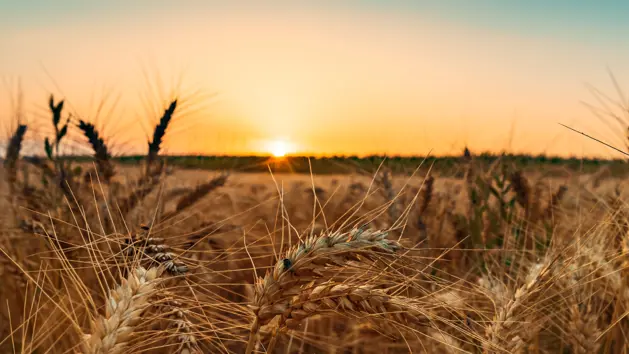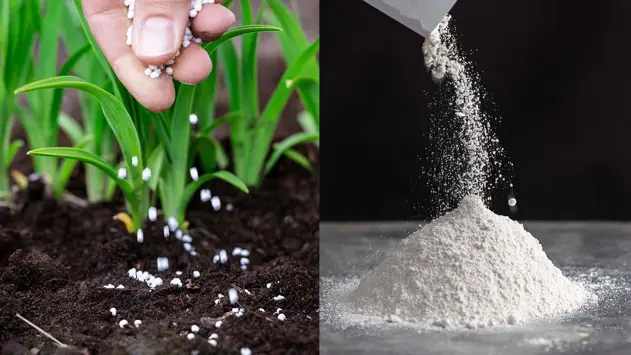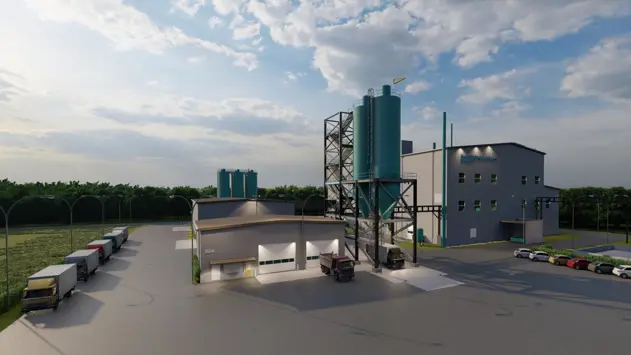
Phosphorus recovery contributes to avoiding phosphorus imports from Russia
Processes like Ash2Phos among others can help the EU avoiding phosphorus imports from Russia – let’s dive into a future with less waste and more sustainable approaches regarding food security.
03 Jul 2025An environmental review by Ragn-Sells shows that in 2024 the European Union bought almost €1 billion worth of phosphorus fertilisers and phosphates from Russia – about a quarter of all such imports into the bloc that year.
Drawing on data from the EU’s Directorate-General for Agriculture and Rural Development, the analysis puts total extra-EU purchases of phosphorus products at €3.97 billion, with Russia’s share reaching €989 million. Russia still ranks as the EU’s second-largest supplier despite sanctions linked to the war in Ukraine; fertilisers remain exempt to avoid exacerbating global food shortages. Morocco, owner of the world’s largest known phosphate reserves, tops the supplier list, exporting over €1.4 billion worth to EU buyers in 2024.
Phosphorus is essential for mineral fertilisers and animal feed, yet the EU’s single active phosphate mine covers only 5–10 percent of demand. Phosphorus and phosphate rock have therefore been classed as a critical raw material in the Union for more than ten years.
Sewage sludge – the solid residue from wastewater treatment - contains significant amounts of phosphorus that can be recovered and reused as fertiliser, though it is not yet allowed in animal feed. Within the EU, Germany leads the shift from mined to circular phosphorus, followed by Switzerland and Austria. A 2017 German regulation obliges wastewater treatment plants to extract most of the nutrient: large facilities must comply by 2029, smaller ones by 2032.
To recover this valuable resource and also to meet the regulation’s requirements, Ragn-Sells’ innovation company EasyMining has developed the Ash2Phos technology, which enables the recovery of more than 90 percent of the phosphorus from incinerated sewage sludge ash. Through this process, phosphorus is efficiently extracted and refined into RevoCaP – a high-purity, recycled calcium phosphate. The technology makes it possible to replace imported phosphorus with locally produced recycled phosphorus for fertilisers and potentially in animal feed once EU rules allow.
Construction of the world’s first Ash2Phos plant is under way in Schkopau, Germany, through a joint venture with utility firm Gelsenwasser; the facility is scheduled to start up in early 2027 and will supply recycled phosphorus to both German and wider EU markets. Earlier this year EasyMining announced a second plant in Helsingborg, Sweden, further boosting the bloc’s domestic capacity and helping to wean Europe off imports from Russia and Morocco.
Together, these projects illustrate how technology-driven recycling can turn wastewater liabilities into strategic resources and strengthen European food security.
But how does the technology work?
Ash2Phos begins where wastewater treatment ends: the sewage sludge is mono incinerated to destroy organics and shrink its volume, leaving an ash that still contains about 13 % phosphorus along with iron, aluminium, calcium, silicates and trace heavy metals.
First, this ash is mixed with hydrochloric acid at roughly 40 °C and atmospheric pressure. Almost all of the phosphorus, plus most iron and aluminium, dissolve into an acidic liquor, while an inert sand fraction stays solid; after filtration and washing it can be reused in construction materials.
By carefully adjusting the pH-value and adding specific reagents, the process then precipitates out iron- and aluminium-rich streams and traps more than 96 % of cadmium and other toxic metals in a small hazardous-waste cake.
Next step is the addition of lime. It supplies the calcium needed to turn the dissolved phosphate into calcium phosphate. All the separations rely on ordinary atmospheric-pressure equipment.
The main product is RevoCaP™, a non-crystalline calcium phosphate of >98 % purity that meets fertiliser and feed-grade heavy-metal limits. Commercial by-products – ferric chloride, sodium or aluminium aluminate and a clean sand fraction – mean that more than 95 % of the incoming ash ends up as marketable materials instead of waste.
What’s next?
The European Commission recently approved the use of calcium phosphate recovered from sewage sludge ash as fertiliser in organic farming – paving the way for upscaling organic food production in the EU and another milestone for EasyMining and the Ash2Phos technology. The next big goal is getting the RevoCaP and other, similar products permitted for use in animal feed.
This article is a rewrite of the Ragn-Sells Group press release from 2025-05-07: "One-quarter of EU phosphorus imports in 2024 came from Russia."
Read also the updated EU Phosphorus Index report from 2025-07-22: EU Phosphorus Index: EU’s Phosphorus Imports from Russia Keep Rising – Despite the War


